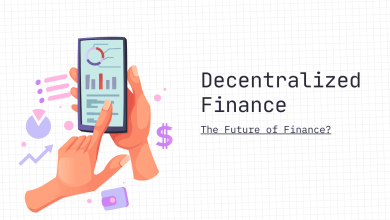Distributed Ledger Technology (DLT): The Foundation of Blockchain and Beyond

Distributed Ledger Technology (DLT) is a revolutionary approach to recording and sharing data across a network of participants. It forms the foundation of blockchain technology, but its applications extend far beyond cryptocurrencies. This article will explain what DLT is, how it works, its key characteristics, its benefits, and its potential to transform various industries.
What is a Distributed Ledger?
A distributed ledger is a database that is replicated and shared across multiple computers or nodes in a network. Unlike traditional centralized databases, where a single entity controls the data, a distributed ledger has no central administrator. Instead, all participants in the network have a copy of the ledger, and changes are made through a consensus mechanism.
Think of it like a shared Google Sheet, but with some crucial differences:
- Decentralized: No single person or organization controls the sheet.
- Immutable (Often): Once data is added to the ledger, it’s typically very difficult or impossible to alter or delete it.
- Transparent (Often): Participants can often view the history of changes to the ledger (although the level of transparency can vary).
- Secure: Cryptography is used to secure the ledger and ensure the integrity of the data.
How Does a Distributed Ledger Work?
- Transaction Initiation: A participant initiates a transaction (e.g., sending cryptocurrency, updating a record).
- Transaction Broadcasting: The transaction is broadcast to the network.
- Verification: Nodes in the network verify the transaction’s validity according to pre-defined rules (the consensus mechanism).
- Consensus: The nodes reach consensus on the validity of the transaction and its order in the ledger.
- Replication: The updated ledger, including the new transaction, is replicated across all nodes in the network.
- Immutablity: Depending on implementation, it becomes difficult or near impossible to remove once added to the ledger.
Key Characteristics of Distributed Ledgers
- Decentralization: No single point of control or failure.
- Distribution: The ledger is replicated across multiple nodes.
- Consensus: A mechanism for reaching agreement among participants.
- Immutability (Often): Data, once added, is typically very difficult to change.
- Transparency (Often): Participants can often view the transaction history (though the level of transparency and anonymity can vary).
- Security: Cryptography is used to secure the ledger and prevent unauthorized access or modification.
Types of Distributed Ledgers
DLTs can be categorized based on their access control mechanisms:
- Permissionless (Public) DLTs: Anyone can join the network, participate in the consensus process, and view the ledger. Bitcoin and Ethereum are examples of public, permissionless blockchains.
- Permissioned (Private) DLTs: Access is restricted to a specific group of participants. These are often used by organizations for internal record-keeping or supply chain management. Hyperledger Fabric is an example of a permissioned DLT platform.
- Hybrid DLTs: Combine elements of both permissionless and permissioned DLTs.
Blockchain vs. Distributed Ledger Technology (DLT)
It’s important to distinguish between blockchain and DLT.
- DLT is the broader concept: It encompasses all types of distributed databases.
- Blockchain is a specific type of DLT: It organizes data into blocks that are chained together chronologically and cryptographically.
All blockchains are DLTs, but not all DLTs are blockchains. Some DLTs use different data structures and consensus mechanisms than blockchains. For example, directed acyclic graphs (DAGs) are another type of DLT that doesn’t use blocks and chains.
Benefits of Distributed Ledger Technology
- Increased Transparency: DLTs can provide a shared, auditable record of transactions, increasing transparency and trust among participants.
- Enhanced Security: The distributed nature of DLTs makes them more resistant to attacks and single points of failure.
- Improved Efficiency: DLTs can streamline processes by eliminating intermediaries and automating transactions.
- Reduced Costs: By removing intermediaries and automating processes, DLTs can reduce operational costs.
- Greater Traceability: DLTs can provide a complete and immutable history of transactions, making it easier to track assets and verify their authenticity.
- Increased Trust: By providing a shared, secure, and transparent record, DLTs can increase trust among participants.
Applications of Distributed Ledger Technology
DLT has the potential to transform a wide range of industries:
- Cryptocurrencies: Bitcoin, Ethereum, and other cryptocurrencies are the most well-known applications of DLT.
- Supply Chain Management: Tracking goods from origin to consumer, improving transparency and reducing fraud.
- Healthcare: Securely storing and sharing medical records, improving patient privacy and data interoperability.
- Voting Systems: Creating secure and transparent voting systems.
- Digital Identity: Managing digital identities securely and efficiently.
- Financial Services: Streamlining payments, settlements, and other financial processes.
- Real Estate: Simplifying property transactions and reducing paperwork.
Challenges of Distributed Ledger Technology
- Scalability: Some DLTs, particularly early blockchains, struggle to handle a large volume of transactions.
- Regulation: The legal and regulatory landscape surrounding DLT is still evolving.
- Interoperability: Different DLTs often cannot communicate with each other seamlessly.
- Complexity: Implementing and managing DLT systems can be complex.
- Energy Consumption: If a Proof of Work consensus mechanism is used.
Conclusion: DLT – A Foundation for the Future
Distributed Ledger Technology (DLT) represents a fundamental shift in how we record, share, and manage data. While blockchain is the most well-known application of DLT, the technology’s potential extends far beyond cryptocurrencies. As DLT matures and overcomes its challenges, it is likely to play an increasingly important role in various industries, transforming the way we do business, interact with each other, and build trust in the digital world.





